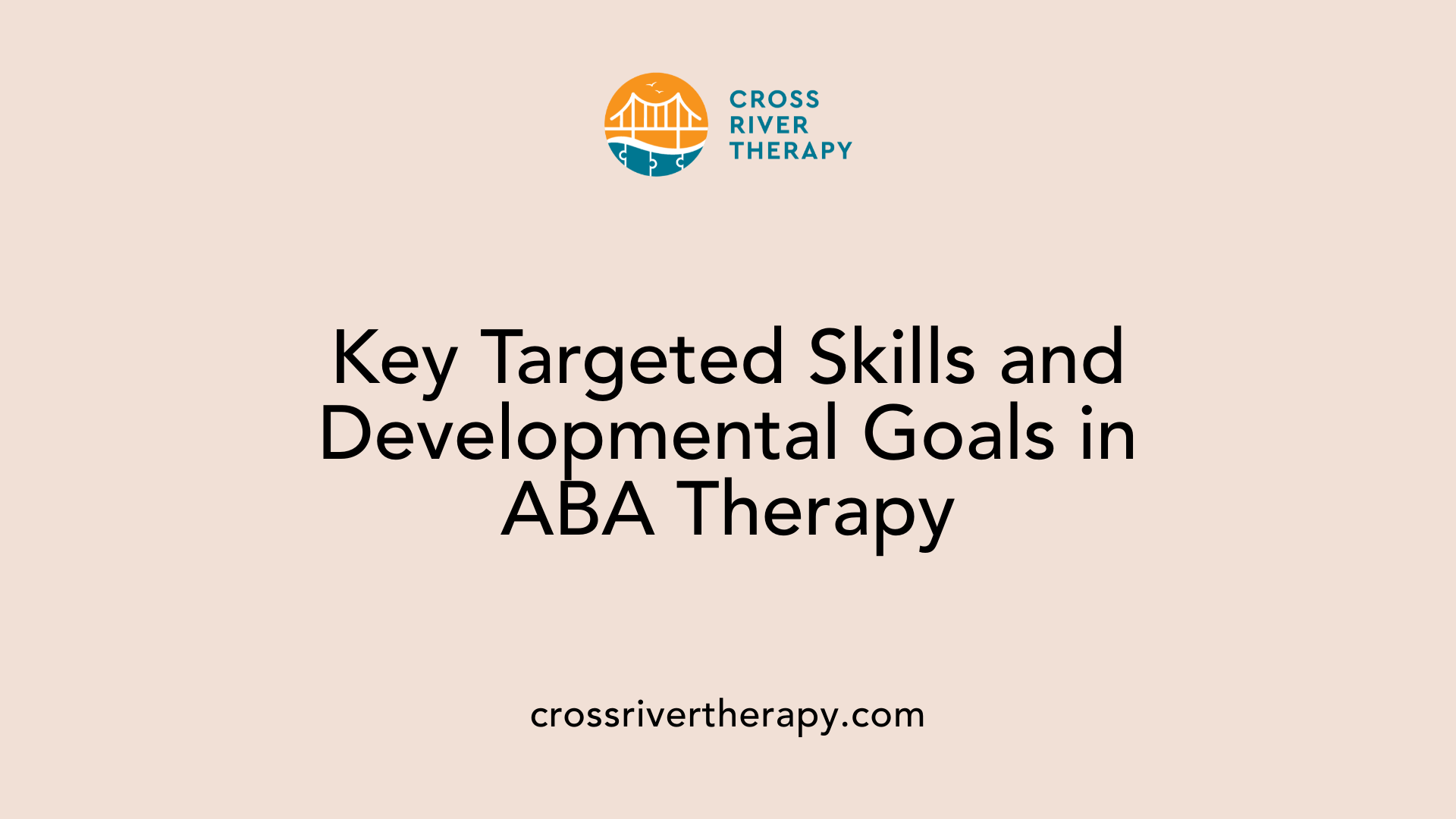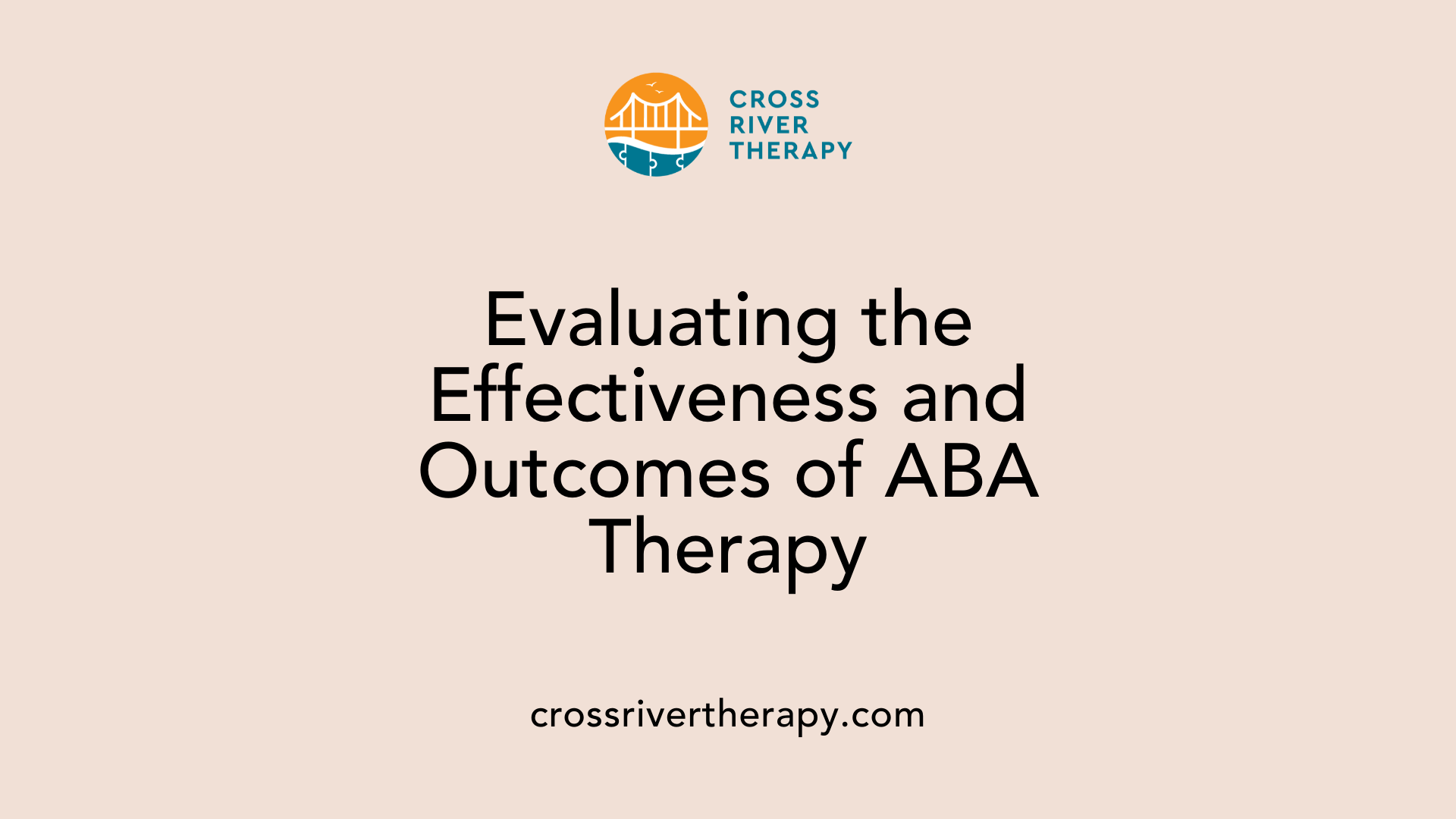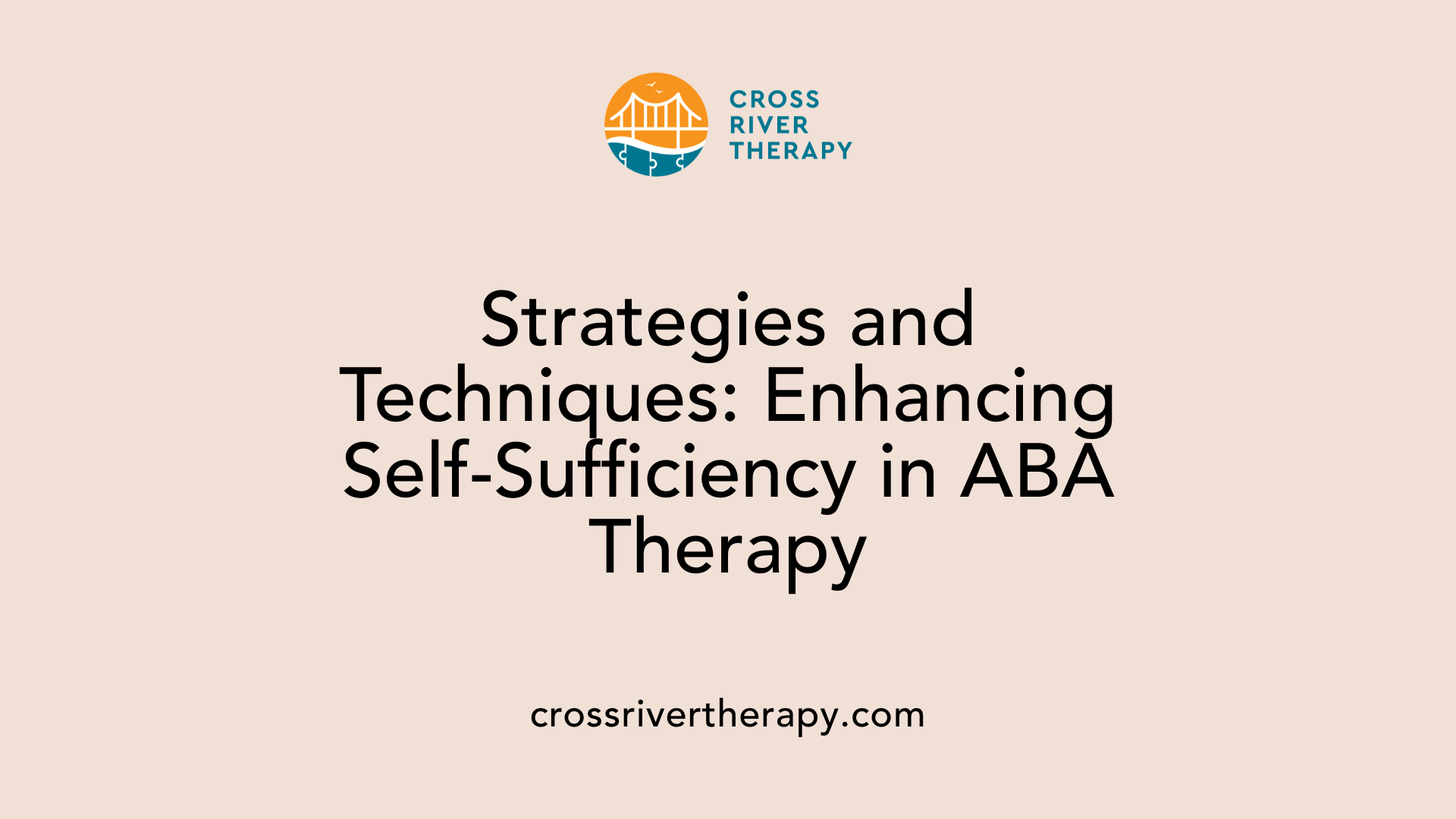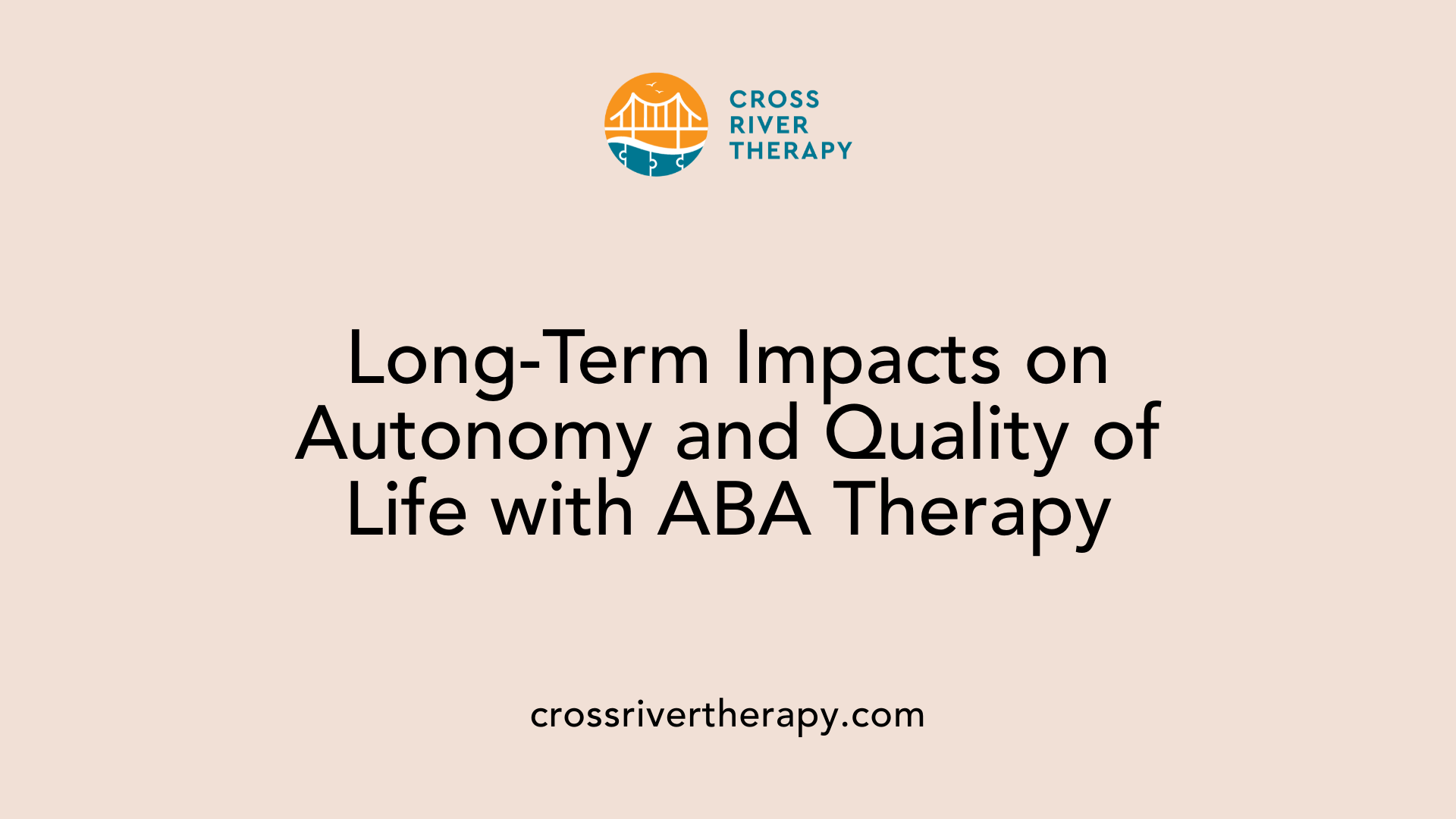How ABA Therapy Helps Build Independence in Children with Autism
Empowering Autism Spectrum Children through ABA Therapy
Introduction: Unlocking Independence with ABA Therapy
Applied Behavior Analysis (ABA) therapy stands out as a pivotal intervention for children with autism, known for its structured and individualized approach aimed at fostering independence. Many families and educators turn to ABA therapy to help children with autism achieve greater autonomy in their daily lives. This article delves into the various techniques, skills, and long-term benefits of ABA therapy, providing a comprehensive overview of how it supports children's independence and improves their quality of life.
Understanding ABA Therapy's Impact on Autism

How does ABA therapy help children with autism?
ABA therapy helps children with autism by implementing established principles of learning and behavior. Its main aim is to enhance positive behaviors and reduce harmful ones through a systematic approach. Here’s a closer look at the core components:
- Individualized Programs: Each child receives a tailored plan designed by trained behavior analysts, focusing on their unique strengths and challenges.
- Skill Development: The therapy emphasizes improving communication, social skills, and daily living skills. Essential self-care routines like brushing teeth, dressing, and preparing meals are prioritized.
- Behavior Modification Techniques: Techniques such as positive reinforcement are employed. This involves rewarding desired behaviors to encourage their recurrence. Studies show that targeted reinforcement fosters motivation, boosting self-esteem and skill retention.
Principles of ABA therapy
ABA therapy is structured around several key principles:
Role of ABA therapy in promoting independence in children with autism
ABA therapy plays a critical role in fostering independence. Routine independence allows children with autism to perform daily tasks with little help. Here are important aspects of this process:
- Building Life Skills: Skills such as feeding, using the bathroom, and engaging in social interactions enhance quality of life.
- Structured Learning Environments: These settings create predictability, reducing anxiety and encouraging learning.
- Celebrating Progress: Recognizing even small accomplishments builds confidence, helping children feel valued and capable.
- Long-Term Benefits: Skills acquired through ABA therapy extend into adulthood, as children become proficient in essential self-care and independent living skills, improving overall life satisfaction and reducing reliance on others.
Targeted Skills and Developmental Goals in ABA Therapy

What skills and developmental goals does ABA therapy target?
ABA therapy targets a comprehensive range of skills and developmental goals aimed at improving various aspects of a child's life. The primary focus includes enhancing communication, socialization, independent living, and academic abilities.
- Communication Skills: ABA therapy work promotes both expressive and receptive language skills, enabling children to articulate their needs and understand the communication of others. Effective communication is vital for building relationships.
- Social Skills: This therapy also emphasizes social interactions, teaching children techniques like turn-taking, emotional recognition, and appropriate sharing behaviors. These skills are essential for navigating peer relationships.
- Daily Living Skills: Self-care routines such as brushing teeth, dressing, and managing personal belongings are prioritized to foster independence. Children learn to perform these tasks with minimal assistance, boosting confidence in their ability to care for themselves.
- Academic Skills: ABA therapy promotes academic success by breaking down educational materials into manageable steps, facilitating easier learning. This approach allows tailored interventions based on the individual child's needs.
By focusing on these critical areas, ABA therapy plays a vital role in helping children with autism achieve meaningful independence and improve their overall quality of life.
Effectiveness and Outcomes of ABA Therapy

What are the common outcomes and effectiveness of ABA therapy in fostering independence?
ABA therapy is widely recognized as an effective method for promoting independence in children with autism. Its structured approach is considered the gold standard in the medical community for improving developmental outcomes.
Commonly observed outcomes include:
- Significant improvements in social interactions and communication skills.
- Enhanced adaptive living skills and daily self-care routines, which are essential for independence.
- Custom treatment plans tailored to each child's unique needs, allowing for personalized learning experiences.
- Data-driven methods combined with positive reinforcement strategies to encourage behavior improvement.
The framework of ABA therapy typically requires 25 to 40 hours per week. Such intensive intervention has shown considerable benefits across various developmental areas as demonstrated by multiple meta-analyses. These studies suggest that children often achieve greater competence in handling daily tasks with less assistance as they mature.
Further, ABA therapy emphasizes skills transferable across environments, such as:
- Self-care tasks like brushing teeth and dressing.
- Daily routines that seamlessly integrate into school and community activities.
- Essential life skills needed for future independence, including basic job skills and preparation for adult responsibilities.
Despite these positive outcomes, researchers indicate a need for additional rigorous studies to thoroughly understand the long-term impacts and quality of life implications of ABA therapy for children with autism.
Strategies and Techniques for Enhancing Self-Sufficiency

What strategies and techniques are used in ABA therapy to enhance self-sufficiency?
ABA therapy employs a variety of strategies and techniques tailored to improve self-sufficiency in individuals. Here are some of the most effective methods:
- Positive Reinforcement
This technique encourages desired behaviors by providing tangible rewards or verbal praise. It motivates children to continue practicing new skills, enhancing their self-esteem and confidence.
- Task Analysis
Complex tasks are broken down into smaller, manageable steps, making them easier for children to learn. For instance, brushing teeth is segmented into individual actions like rinsing, applying toothpaste, and scrubbing, facilitating mastery.
- Prompting
This method involves guiding children's actions through verbal cues or visual aids. As they become more proficient, prompts are gradually faded to foster independence.
- Natural Environment Teaching
Skills learned in structured settings are practiced in real-life situations, ensuring that children can generalize their skills across various contexts such as home, school, and community.
Techniques used in ABA therapy
In addition to the aforementioned strategies, ABA therapy utilizes several structured techniques to reinforce learning:
These strategies collectively foster essential skills for self-sufficiency and prepare individuals for greater independence.
Improving Daily Skills and Social Interactions
Enhancing daily living skills with ABA therapy
ABA therapy plays a crucial role in helping children with autism improve their daily living skills. By using techniques like task analysis, complex tasks are divided into smaller, manageable steps. For instance, tasks such as preparing meals or dressing can be broken down into clear sequences, making it easier for children to understand and master them.
Additionally, the therapy utilizes positive reinforcement to motivate children through rewards or praise. This boosts their confidence and encourages them to practice essential self-care routines like brushing teeth or feeding themselves. With ongoing practice, children learn to complete these tasks independently, leading to a greater sense of autonomy and accomplishment.
Social interaction skills developed through ABA therapy
Social skills and communication are integral focuses of ABA therapy. The structured environment helps children develop essential social interaction abilities. They learn how to express their needs, navigate social situations, and build relationships, contributing to their overall confidence.
By engaging in guided practice and role-playing exercises, children can rehearse social interactions in a safe space, allowing them to become more comfortable in real-life situations. As they achieve small successes in these areas, their self-esteem grows, further motivating them to practice and refine their skills.
The consistent reinforcement of these behaviors across different environments enhances their ability to socialize, ultimately leading to improvements in their interactions both at home and in the community.
Long-Term Effects on Autonomy and Quality of Life

What are the long-term impacts of ABA therapy on children's autonomy and quality of life?
The long-term impacts of ABA therapy on children's autonomy and quality of life can be profound. By focusing on essential skills such as communication, social interactions, and adaptive behaviors, ABA therapy leads to significant improvements in independence and overall functioning.
Research supports that children who engage in intensive and individualized ABA interventions experience sustained gains in cognitive and language skills. These improvements often translate into better academic performance, enhanced social skills, and an increased ability to navigate daily life.
Additionally, the personalized approach of ABA therapy ensures that each child's unique needs are addressed. This tailored intervention not only maximizes effectiveness but also promotes engagement and motivation, which are crucial for long-term success.
How does ABA therapy improve quality of life?
The quality of life for children with autism is enhanced through various avenues when they receive ABA therapy. Key improvements include:
- Increased Independent Living Skills: Children learn critical self-care tasks, fostering greater autonomy.
- Boosted Confidence and Self-Esteem: Successful completion of tasks reinforces a child’s belief in their abilities.
- Better Social Interactions: Enhanced communication skills enable children to form meaningful relationships.
- Enhanced Adaptability: Skills learned can be generalized to different settings, making transitions smoother.
Ultimately, these long-term benefits contribute significantly to an improved quality of life, allowing children with autism to function more independently and achieve greater fulfillment in their daily lives.
Resources for Parents and Caregivers
Where can parents and caregivers find more information and resources to support their child's developmental progress through ABA therapy?
Parents and caregivers looking to support their child's progress through ABA therapy can find a wealth of valuable resources. First, organizations such as Autism Speaks provide comprehensive guidelines on selecting ABA providers and accessing educational materials on various ABA techniques. These resources can help parents understand the framework and goals of ABA therapy.
Programs for Enhancing Parental Skills
Additionally, training programs like the Enhanced Parent Education Program equip families with effective skills to apply ABA strategies in their home environment. This not only enhances the child's learning but also promotes adaptability in daily routines.
Importance of Parental Involvement
Active involvement from parents is crucial. Participation in training sessions and maintaining open communication with therapists can significantly enhance therapy outcomes.
Tools and Monitoring Progress
Utilizing tools such as a parent portal enables caregivers to track therapy goals and monitor their child's progress, fostering a collaborative relationship with therapists. This ongoing engagement is vital for accelerating learning and ensuring that skills are being effectively generalized across environments.
Connecting with Support Networks
Finally, connecting with local autism support groups offers opportunities for emotional support and sharing experiences among peers navigating similar challenges in ABA therapy. Such networks can provide encouragement and insight, making the journey smoother for both children and their families.
Conclusion: Pathway to Independence
ABA therapy offers practical and effective solutions to build autonomy in children with autism, emphasizing tailored strategies that accommodate individual needs. Through a combination of focused skill development, positive reinforcement, and structured interventions, ABA therapy not only aids in achieving milestone independence but also nurtures long-term improvements in life quality. Parents and caregivers play a crucial role in this journey, supported by a wealth of resources to enhance their child's learning. As ABA therapy continues to evolve, its impact on fostering independence in children with autism remains profound, paving the way for a brighter, more autonomous future.
References
- ABA Therapy for Building Independence in Children with Autism
- How ABA therapy can help children with autism develop ...
- How ABA Therapy Helps Children with Autism Build Routine ...
- ABA Therapy: A Path to Independence for Children with Autism
- How ABA Therapy Builds Self-Care & Independent Living Skills
- How ABA Therapy Builds Confidence in Children with Autism
- ABA Therapy Techniques
- How ABA Therapy Supports Independence in Daily Activities
- 10 Evidence-Based Strategies Used in Pediatric ABA Therapy for ...



